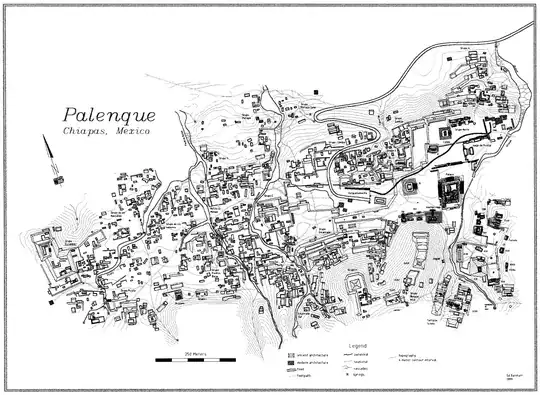This is not true.
Most of Palenque has been thoroughly surveyed, mapped and documented. While not all areas have been excavated, there has been extensive analysis of the settlement.
Exploration
Palenque is considered a medium-sized site. It was surveyed and mapped in 2000 through a project called the Palenque Mapping Project (PMP):
Completed in August of 2000, the Palenque Mapping Project was a three
year program of survey and exploration at the ruins of Palenque,
Chiapas, Mexico. The data gathered during the project has to date
resulted in the creation of what has been described as the most
accurate and detailed map of maya ruins yet made.
You can see the PDF map here. There are also two main works that derived from this mapping. I highly recommend both, but the first one is particularly enlightening:
Because Mayan cities were developed in an unplanned fashion, with places and palaces torn down and replaced frequently, their boundaries are often hard to determine. The PMP however documented 1481 structures and over 16 linear kilometers of terracing. Palenque seems to have had an extremely high settlement density and one of the most extensive public works systems ever built by the Maya.
Now, how much of Palenque's total size was covered by this mapping project?
There are three areas that weren't explored because they are privately owned. These are, however, considered outskirts. The main centre is the one tourists can visit, and has been excavated and researched in depth.
Reconnaissance to the east, north, and south of Palenque’s plateau,
though not covered in this dissertation’s map, was sufficiently
thorough to say with confidence that settlement density in those
direction drops off sharply
So although it is not exactly know how much there is yet to be explored (aerial images show a plateau that continues 1 km to the west), there is a general agreement that those areas will not be as settlement dense as the centre.
Excavation
Not all areas that were charted have been excavated. Excavations are invasive and destructive, not to mention really expensive when done in the jungle, as trees keep growing and burying structures each year.
It's rare to find completely excavated cities, though, especially when newer structures have been built on top of old ones, and the land is in private hands. Maintenance can also be a big issue for these sort of sites. The biggest structures in Palenque have been explored to detail from 1922, however, and those can be considered representative of the city as a whole.
You can see the full list of excavations and investigations in the Palenque Project website. Also, the map is impressive, so here's a smaller version:

